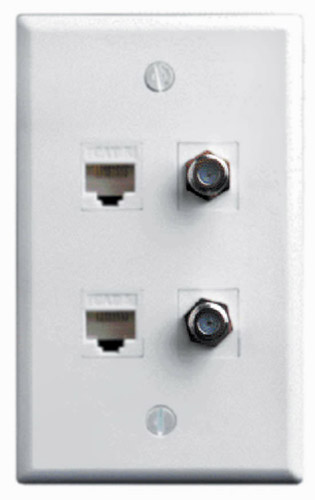December 2002
Most people are familiar with phone plugs. They are the clear plastic snap-ins that allow us to connect our telephones, faxes, answering machines, modems and computers. These male plugs snap into matching female jacks in your walls.

Most often, these plugs are the six-position variety. If you look closely at one of them you will see six grooves in the plastic. At least two (but usually four and sometimes all six) of these grooves contain tiny metal contact strips, which terminate the copper conductors in the cable and mate with the contacts in the jack.
If, however, you live in a new home, or an older home recently retrofitted with structured communications wiring, you might be surprised to see a new type of plugs and jacks in your home. They are a bit wider than a conventional phone plug or jack because they are designed to carry more data. In fact, they have eight conductors instead of six-as a result they are known as eight-position plugs/jacks or, in industry jargon, RJ-45 plugs/jacks.
These jacks are designed to accommodate plugs equal to their size or smaller. An eight-position RJ-45 jack can handle eight-, six-, or four-conductor plugs, so older equipment will usually work fine with the newer, higher-capacity jacks.
The older six-position plugs are still by far the most common. But the newer plugs are becoming more prevalent as structured communications wiring is installed in more homes.
The new plugs and jacks are intended for digital communications, but the line between voice and data communications services is blurring, and the distinction between a voice line and a data line is becoming less important as technology advances. Voice calls often carry data, such as caller-ID information, and data connections can often carry telephone conversations as well.
Contractors often install wall plates that have six-position jacks for phone service and eight-position jacks for data communications. However, it is expected that eight-position jacks will eventually phase out the six-position units because the larger jacks make full use of the four twisted pairs of wires that are available in Category 5 and 5e (e for enhanced) cabling now being installed in homes and businesses. Category 5e has become the recommended standard for both phone and data communications wiring, and is a significant improvement over what has been used in the past.
For additional information about residential communications over copper wires, visit our Telecommunications section.
